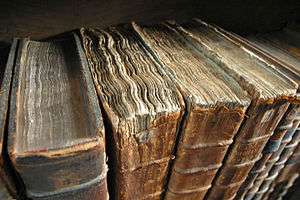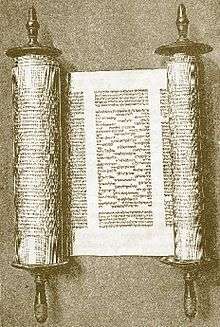Bechukotai
Bechukotai, Bechukosai, or B'hukkothai (בְּחֻקֹּתַי bəḥuqqōṯay — Hebrew for "by my decrees," the second word, and the first distinctive word, in the parashah) is the 33rd weekly Torah portion (פָּרָשָׁה, parashah) in the annual Jewish cycle of Torah reading and the 10th and last in the Book of Leviticus. It constitutes Leviticus 26:3–27:34. The parashah addresses blessings for obeying the law, curses for disobeying it, and vows. The parashah is made up of 3,992 Hebrew letters, 1,013 Hebrew words, and 78 verses, and can occupy about 131 lines in a Torah Scroll (סֵפֶר תּוֹרָה, Sefer Torah).[1]
Jews generally read it in May or early June. The lunisolar Hebrew calendar contains up to 55 weeks, the exact number varying between 50 in common years and 54 or 55 in leap years. In leap years (for example, 2019, 2022, 2024, and 2027), parashah Bechukotai is read separately. In common years (for example, 2020, 2021, 2023, 2025, and 2026), parashah Bechukotai is combined with the previous parashah, Behar, to help achieve the needed number of weekly readings.[2]
In years when the first day of Passover falls on a Sabbath (as it does in 2018, 2019, and 2022), Jews in Israel and Reform Jews read the parashah following Passover one week before Conservative and Orthodox Jews in the Diaspora. In such years, Jews in Israel and Reform Jews celebrate Passover for seven days and thus read the next parashah (in 2018, Shemini) on the Sabbath one week after the first day of Passover, while Conservative and Orthodox Jews in the Diaspora celebrate Passover for eight days and read the next parashah (in 2018, Shemini) one week later. In some such years (for example, 2018), the two calendars realign when Conservative and Orthodox Jews in the Diaspora read Behar together with Bechukotai while Jews in Israel and Reform Jews read them separately.[3]
Readings
In traditional Sabbath Torah reading, the parashah is divided into seven readings, or עליות, aliyot.[4]
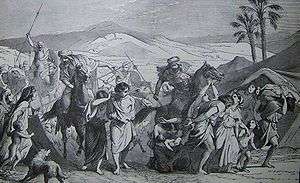
First reading — Leviticus 26:3–5
In the first reading (עליה, aliyah), God promised that if the Israelites followed God's laws, God would bless Israel with rains in their season, and abundant harvests.[5]
Second reading — Leviticus 26:6–9
In the second reading (עליה, aliyah), God promised that if the Israelites followed God's laws, God would bless Israel with peace, victory over enemies, and fertility, and God's presence.[6]
Third reading — Leviticus 26:10–46
In the third reading (עליה, aliyah), God promised that if the Israelites followed God's laws, God would bless Israel with God's presence.[7] But in the section known as Tocheichah or the Admonitions, if the Israelites did not observe God's commandments, God would wreak upon Israel misery, consumption, fever, stolen harvests, defeat by enemies, poor harvests, attacks of wild beasts, pestilence, famine, desolation, and timidity.[8] Those who survived would be removed to the land of their enemies, where they would become heartsick over their iniquity, confess their sin, and atone.[9] God promised then to remember God's covenants with Jacob, Isaac, Abraham, and the ancients whom God freed from Egypt.[10]
Fourth reading — Leviticus 27:1–15
In the fourth reading (עליה, aliyah), God told Moses to instruct the Israelites that when anyone vowed to offer God the value of a human being, the following scale would apply:
- for a man from 20 to 60 years of age, 50 shekels of silver;[11]
- for a woman from 20 to 60 years, 30 shekels;[12]
- for a boy from 5 to 20 years, 20 shekels;[13]
- for a girl from 5 to 20 years, 10 shekels;[13]
- for a boy from 1 month to 5 years, 5 shekels;[14]
- for a girl from 1 month to 5 years, 3 shekels;[14]
- for a man 60 years or over, 15 shekels;[15] and
- for a woman 60 years or over, 10 shekels.[15]
But if a vower could not afford the payment, the vower was to appear before the priest, and the priest was to assess the vower according to what the vower could afford.[16] If the vow concerned an animal that could be brought as an offering, the animal was to be holy, and one could not exchange another for it, and if one did substitute one animal for another, the thing vowed and its substitute were both to be holy.[17] If the vow concerned an unclean animal that could not be brought as an offering, the vower was to present the animal to the priest, the priest was to assess it, and if the vower wished to redeem it, the vower was to add one-fifth to its assessment.[18] If one consecrated a house to God, the priest was to assess it, and if the vower wished to redeem it, the vower was to add one-fifth to the assessment.[19]
Fifth reading — Leviticus 27:16–21
In the fifth reading (עליה, aliyah), if one consecrated to God land of one's ancestral holding, the priest was to assess it in accordance with its seed requirement.[20] If the vower consecrated the land after the jubilee year, the priest was to compute the price according to the years left until the next jubilee year, and reduce the assessment accordingly.[21] If the vower wished to redeem the land, the vower was to add one-fifth to the assessment and retain title, but if the vower did not redeem the land and the land was sold, it was no longer to be redeemable, and at the jubilee the land was to become the priest's holding.[22]
Sixth reading — Leviticus 27:22–28
In the sixth reading (עליה, aliyah), if one consecrated land that one purchased (not land of ancestral holding) the priest was to compute the assessment up to the jubilee year, the vower was to pay the assessment as of that day, and in the jubilee the land was to revert to the person whose ancestral holding the land was.[23] No firstling of a clean animal could be consecrated, for it already belonged to God.[24] But a firstling of an unclean animal could be redeemed at its assessment plus one-fifth, and if not redeemed, was to be sold at its assessment.[25] Nothing that one had proscribed for God (subjected to cherem) could be sold or redeemed.[26]
Seventh reading — Leviticus 27:29–34
In the seventh reading (עליה, aliyah), no human being proscribed could be ransomed, but he was to be put to death.[27] All tithes from crops were to be God's, and if one wished to redeem any of the tithes, the tither was to add one-fifth to them.[28] Every tenth head of livestock was to be holy to God, and the owner was not to choose among good or bad when counting off the tithe.[29]
Readings according to the triennial cycle
Jews who read the Torah according to the triennial cycle of Torah reading read the parashah according to a different schedule.[30]
In inner-biblical interpretation
The parashah has parallels or is discussed in these Biblical sources:[31]
Leviticus chapter 26
Leviticus 26:9 addresses God's role in the creation of children. While Leviticus 12:6–8 required a new mother to bring a burnt-offering and a sin-offering, Leviticus 26:9 Deuteronomy 28:11 and Psalm 127:3–5 make clear that having children is a blessing from God, Genesis 15:2 and 1 Samuel 1:5–11 characterize childlessness as a misfortune, and Leviticus 20:20 and Deuteronomy 28:18 threaten childlessness as a punishment.
In Leviticus 26:14–15, God warned of consequences “if you reject My laws and spurn My rules.” Similarly, in Amos 2:4, the 8th century BCE prophet Amos condemned people of Judah, “because they have spurned the Teaching of the Lord and have not observed His laws.”
The Admonitions of Leviticus 26:14–38 are paralleled in Deuteronomy 28:15–68. The curses in Leviticus are considered more severe than those in Deuteronomy, for "the former [were] spoken by Moses in the name of God and the latter by Moses on his own initiative; the former is worded in first person and addressed to the Jews in plural while the latter is in first-person and addressed in singular form".[32]
In Leviticus 26:42–45, God promises to "remember" God's covenant with Jacob, Isaac, and Abraham to deliver the Israelites and the Land of Israel. Similarly, God remembered Noah to deliver him from the flood in Genesis 8:1, God promised to remember God's covenant not to destroy the Earth again by flood in Genesis 9:15–16, God remembered Abraham to deliver Lot from the destruction of Sodom and Gomorrah in Genesis 19:29, God remembered Rachel to deliver her from childlessness in Genesis 30:22, God remembered God's covenant with Abraham, Isaac, and Jacob to deliver the Israelites from Egyptian bondage in Exodus 2:24 and 6:5–6, Moses called on God to remember God's covenant with Abraham, Isaac, and Jacob to deliver the Israelites from God's wrath after the incident of the Golden Calf in Exodus 32:13 and Deuteronomy 9:27, the Israelites were to blow upon their trumpets to be remembered and delivered from their enemies in Numbers 10:9, Samson called on God to deliver him from the Philistines in Judges 16:28, Hannah prayed for God to remember her and deliver her from childlessness in 1 Samuel 1:11 and God remembered Hannah's prayer to deliver her from childlessness in 1 Samuel 1:19, Hezekiah called on God to remember Hezekiah's faithfulness to deliver him from sickness in 2 Kings 20:3 and Isaiah 38:3, Jeremiah called on God to remember God's covenant with the Israelites to not condemn them in Jeremiah 14:21, Jeremiah called on God to remember him and think of him, and avenge him of his persecutors in Jeremiah 15:15, God promises to remember God's covenant with the Israelites and establish an everlasting covenant in Ezekiel 16:60, God remembers the cry of the humble in Zion to avenge them in Psalm 9:13, David called upon God to remember God's compassion and mercy in Psalm 25:6, Asaph called on God to remember God's congregation to deliver them from their enemies in Psalm 74:2, God remembered that the Israelites were only human in Psalm 78:39, Ethan the Ezrahite called on God to remember how short Ethan's life was in Psalm 89:48, God remembers that humans are but dust in Psalm 103:14, God remembers God's covenant with Abraham, Isaac, and Jacob in Psalm 105:8–10, God remembers God's word to Abraham to deliver the Israelites to the Land of Israel in Psalm 105:42–44, the Psalmist calls on God to remember him to favor God's people, to think of him at God's salvation, that he might behold the prosperity of God's people in Psalm 106:4–5, God remembered God's covenant and repented according to God's mercy to deliver the Israelites in the wake of their rebellion and iniquity in Psalm 106:4–5, the Psalmist calls on God to remember God's word to God's servant to give him hope in Psalm 119:49, God remembered us in our low estate to deliver us from our adversaries in Psalm 136:23–24, Job called on God to remember him to deliver him from God's wrath in Job 14:13, Nehemiah prayed to God to remember God's promise to Moses to deliver the Israelites from exile in Nehemiah 1:8, and Nehemiah prayed to God to remember him to deliver him for good in Nehemiah 13:14–31.
In early nonrabbinic interpretation

The parashah has parallels or is discussed in these early nonrabbinic sources:[33]
Leviticus chapter 27
Reading Leviticus 27:1–8, Philo taught that in the case of those who vowed not merely property but their own selves, the law affixed a price to their vows, not having regard to the vower's beauty, importance, or anything of the kind, but treating each individual alike (separating men from women, and infants from the fully grown). Philo interpreted the law to set this ransom with equality for three reasons: (1) The importance of a vow is equal whether it was made by a person of great or of little importance. (2) Those who have made a vow should not be exposed to the treatment of slaves, who were valued according to the condition and beauty of their bodies. (3) Most importantly, while people value inequality, God honors equality.[34]
In classical rabbinic interpretation
The parashah is discussed in these rabbinic sources from the era of the Mishnah and the Talmud:[35]
Leviticus chapter 26
The Sifra asked whether the words "If you walk in My statutes" in Leviticus 26:3 might refer to observing religious duties. But the Sifra noted that the continuation of Leviticus 26:3 says, "and keep My commandments, and do them," and that must cover observing religious duties. Thus the Sifra concluded that the words "If you walk in My statutes" must mean laboring in the Torah.[36]
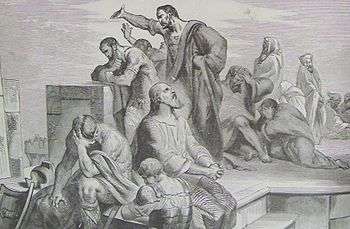
The Mishnah taught that they read the blessings and curses of Leviticus 26:3–45 and Deuteronomy 28:1–68 on public fast days. The Mishnah taught that they did not interrupt the reading of the curses, but had one person read them all.[37]
The Mishnah taught that when (in the words of Leviticus 26:6) “the sword [went] through [the] land,” they would sound an alarm in all places, because it was a spreading evil.[38]
The Tanna Devei Eliyahu taught that if you live by the commandment prohibiting murder (in Exodus 20:12 (20:13 in the NJPS) and Deuteronomy 5:16 (5:17 in the NJPS)), then (in the words of Leviticus 26:6) “the sword shall not go through your land.” If, however, you transgress the commandment, then (in God’s words in Leviticus 26:33) “I will draw out the sword after you.”[39]
The Gemara deduced that the Sanctuary (that is, the Temple in Jerusalem) was called “Tabernacle” from Leviticus 26:11, “And I will set my Tabernacle among you” (as this was said after the Israelites had already erected the Tabernacle in the wilderness). And the Gemara deduced from Exodus 25:8, “And let them make Me a sanctuary, that I may dwell among them,” that the Tabernacle was called “Sanctuary.” Thus the Gemara concluded that Scripture calls the Tabernacle “Sanctuary” and the Sanctuary (that is, the Temple) “Tabernacle,” and one may thus draw analogies between the two.[40]
A Baraita taught that several of the curses in Leviticus 26:16–35 result from particular transgressions. Rabbi Eleazar the son of Rabbi Judah read the word "behalah" ("terror") in Leviticus 26:16 as "be-challah" ("on account of challah") to interpret Leviticus 26:16 to teach that as punishment for the neglect of the challah tithe, God fails to bless what is stored, a curse is sent on prices, and people sow seed but others eat the harvest. The Baraita interpreted Leviticus 26:22–23 to teach that as punishment for vain oaths, false oaths, desecration of God's Name, and desecration of the Sabbath, wild beasts multiply, domestic animals cease, population decreases, and roads become desolate. Using Jeremiah 33:25 to equate the word "covenant" with the Torah, the Baraita interpreted Leviticus 26:25–26 to teach that as punishment for delaying judgment, perverting judgment, corrupting judgment, and neglecting Torah, sword and spoil increase, pestilence and famine come, people eat and are not satisfied, and people eat their scarce bread by weight. And the Baraita interpreted Leviticus 26:30–35 to teach that as punishment for idolatry and failure to observe the Sabbatical (Shmita) and Jubilee (Yovel) years, the Jews are exiled and others come to dwell in their land.[41]
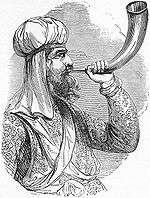
Just as Leviticus 26:19 attributes famine to sin, the Mishnah taught that a famine from drought comes when some of the people do not give tithes, a famine from tumult and drought comes when all decide not to give tithes, and a famine of annihilation comes when they decide (in addition) not to set apart the dough offering. Just as Leviticus 26:25 attributes the sword to sin, the Mishnah taught that the sword comes to the world for the delay of justice, for the perversion of justice, and because of those who interpret the Torah counter to the accepted law. And just as Leviticus 26:25 attributes pestilence to sin, the Mishnah taught that pestilence comes to the world for failure to execute judgment in capital crimes and for violation of the laws governing the produce of the Sabbatical year.[42]
The Mishnah taught that the coming of the sword, as in Leviticus 26:25, was one of several afflictions for which they sounded the ram's horn (shofar) in alarm in every locale, because it is an affliction that spreads.[43]
The Gemara read the words of Leviticus 26:37, "And they shall stumble one upon another," to mean that one will stumble through the sin of another. The Gemara concluded that all everyone is held responsible for each another.[44] Similarly, elsewhere, the Gemara read the words of Leviticus 26:37, "And they shall stumble one upon another," to mean that for all transgressions of the Torah, the whole world is punished. Thus the Gemara taught that all Jews stand as guarantors for one another.[45]
The Gemara reconciled apparently discordant verses touching on vicarious responsibility. The Gemara noted that Deuteronomy 24:16 states: "The fathers shall not be put to death for the children, neither shall the children be put to death for the fathers; every man shall be put to death for his own sin," but Exodus 20:4 (20:5 in NJPS) says: "visiting the iniquity of the fathers upon the children." The Gemara cited a Baraita that interpreted the words "the iniquities of their fathers shall they pine away with them" in Leviticus 26:39 to teach that God punishes children only when they follow their parents' sins. The Gemara then questioned whether the words "they shall stumble one upon another" in Leviticus 26:37 do not teach that one will stumble through the sin of the other, that all are held responsible for one another. The Gemara answered that the vicarious responsibility of which Leviticus 26:37 speaks is limited to those who have the power to restrain their fellow from evil but do not do so.[46]

A Midrash noted that everywhere else, Scripture mentions Abraham before Isaac, and Isaac before Jacob.[47] 30:20, 34:4.) But Leviticus 26:42 mentions Jacob before Isaac, and Isaac before Abraham, to teach that the three were on a par.[48]
In Leviticus 26:41, the heart is humbled. A Midrash catalogued the wide range of additional capabilities of the heart reported in the Hebrew Bible.[49] The heart speaks,[50] sees,[50] hears,[51] walks,[52] falls,[53] stands,[54] rejoices,[55] cries,[56] is comforted,[57] is troubled,[58] becomes hardened,[59] grows faint,[60] grieves,[61] fears,[62] can be broken,[63] becomes proud,[64] rebels,[65] invents,[66] cavils,[67] overflows,[68] devises,[69] desires,[70] goes astray,[71] lusts,[72] is refreshed,[73] can be stolen,[74] is enticed,[75] errs,[76] trembles,[77] is awakened,[78] loves,[79] hates,[80] envies,[81] is searched,[82] is rent,[83] meditates,[84] is like a fire,[85] is like a stone,[86] turns in repentance,[87] becomes hot,[88] dies,[89] melts,[90] takes in words,[91] is susceptible to fear,[92] gives thanks,[93] covets,[94] becomes hard,[95] makes merry,[96] acts deceitfully,[97] speaks from out of itself,[98] loves bribes,[99] writes words,[100] plans,[101] receives commandments,[102] acts with pride,[103] makes arrangements,[104] and aggrandizes itself.[105]

A Midrash interpreted the words, "And yet for all that, when they are in the land of their enemies, I will not reject them," in Leviticus 26:44 to teach that the Shekhinah accompanied Israel into exile.[106] Samuel of Nehardea interpreted the words, "I will not reject them, neither will I abhor them, to destroy them utterly, and to break My covenant with them, for I am the Lord their God," in Leviticus 26:44 to teach that God did "not reject" the Jews in the days of the Greeks, nor "abhor them" in the days of Nebuchadnezzar, nor "destroy them utterly" in the days of Haman, nor "break [God's] covenant with them" in the days of the Persians, "for [God will be] the Lord their God" in the days of Gog and Magog. Similarly, a Baraitha taught that God did "not reject" them in the days of the Chaldeans, for God sent them Daniel, Hananiah, Mishael, and Azariah, God did not "abhor them" in the days of the Greeks, for God sent them Simeon the Righteous, the Hasmonean and his sons, and Mattathias the High Priest, and God did not "destroy them utterly" in the days of Haman, for God sent them Mordecai and Esther, and God did not "break [God's] covenant with them" in the days of the Persians, for God sent them the house of Rabbi and the generations of Sages, "for [God will be] the Lord their God" in the time to come, when no nation or people will be able to subject them.[107]
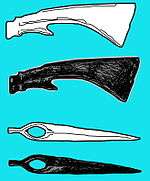
Leviticus chapter 27
Tractate Arakhin in the Mishnah, Tosefta, and Babylonian Talmud interpreted the laws of dedicatory vows in Leviticus 27:1–33.[108]
Rabbi Simeon ben Yohai taught that just as the texts "He shall not break his word" in Numbers 30:3 and "Defer not to pay it" in Ecclesiastes 5:3 apply to vows, so they also apply to valuations, and thus Moses exhorted the Israelites in Leviticus 27:2: "When a man shall clearly utter a vow of persons to the Lord, according to your valuation . . . ."[109]
Interpreting the law of vows in Leviticus 27:2, the Mishnah taught that a young child’s vows were not binding. When a girl turned 11 years old and throughout the year thereafter, they examined to determine whether she was aware of the significance of her vows. The vows of a girl 12 years old or older stood without examination. When a boy turned 12 years old and throughout the year thereafter, they examined to determine whether he was aware of the significance of his vows. The vows of a boy 13 years old or older stood without examination. For girls below age 11 or boys below age 12, even if they said that they knew in honor of Whose Name they vowed, their vows and dedications were not valid. After girls turned 12 or boys turned 13, even though they said that they did not know in the honor of Whose Name they vowed, their vows and dedications stood.[110] The Sifri Zutta told that once a youth told Rabbi Akiva that the youth had dedicated a shovel. Rabbi Akiva asked the youth whether perhaps he had sanctified his shovel to the sun or the moon. The youth replied that Rabbi Akiva did not need to worry, as the youth had sanctified it to the One Who had created them. Rabbi Akiva told the youth that his vows were valid.[111]
The Mishnah taught that the law of valuation sometimes tended toward leniency, and at other times tended toward stringency. The law valued equally the handsomest and the ugliest men in the country, either one owed 50 selas.[112]
The Mishnah taught that to secure a vow to the Temple, they seized property from the one who made the vow.[113] But they let the one who made the vow keep food for 30 days, garments for 12 months, bed and bedding, shoes, and tefillin. If the one who made the vow was a craftsperson, they left two of every kind of tool. If the one who made the vow was a carpenter, they left two axes and two saws. Rabbi Eliezer said that if the one who made the vow was a farmer, they left a yoke of oxen. If the one who made the vow was a donkey-driver, they left a donkey.[114]
Comparing the redemption values for people between the ages of 20 and 60 in Leviticus 27:3–4 with the values for people aged 60 and older in Leviticus 27:7, the Gemara asked why an older woman retained a third of her adult value, but an older man did not retain even that much of his adult value. In response, the Gemara noted that Hezekiah said people say that an old man in the house is a burden, while an old woman in the house is a treasure.[115]
Interpreting the instruction of Leviticus 27:8 that "according to the means of him that vowed shall the priest value him," the Mishnah taught that this was done according to the ability of the one who vowed. The Mishnah taught that if a poor person vowed to give the value of a rich person, the poor person would pay only the valuation for a poor person. But if a rich person vowed to give the value of a poor person, the rich person still had to pay the full value of a rich person.[116] Citing Leviticus 27:8, the Gemara explained that the Merciful One made the obligation dependent upon the means of the one who vowed.[117] The Tosefta taught that while the valuation of a rich man was 50 selas as stated in Leviticus 27:3, the valuation of a poor man was one sela.[118]
Tractate Temurah in the Mishnah, Tosefta, and Babylonian Talmud interpreted the laws of substituting one sacrifice for another in Leviticus 27:1–33.[119]
The Pirke De-Rabbi Eliezer taught that Jacob designated Levi as a tithe, holy to God, within the meaning of Leviticus 27:32. Jacob wished to ford the Jabbok and was detained there by an angel, who asked Jacob whether Jacob had not told God (in Genesis 28:22), "Of all that you shall give me I will surely give a tenth to You." So Jacob gave a tenth of all the cattle that he had brought from Paddan Aram. Jacob had brought some 5,500 animals, so his tithe came to 550 animals. Jacob again tried to ford the Jabbok, but was hindered again. The angel once again asked Jacob whether Jacob had not told God (in Genesis 28:22), "Of all that you shall give me I will surely give a tenth to You." The angel noted that Jacob had sons and that Jacob had not given a tithe of them. So Jacob set aside the four firstborn sons (whom the law excluded from the tithe) of each of the four mothers, and eight sons remained. He began to count from Simeon, and included Benjamin, and continued the count from the beginning. And so Levi was reckoned as the tenth son, and thus the tithe, holy to God, as Leviticus 27:32 says, "The tenth shall be holy to the Lord." So the angel Michael descended and took Levi and brought him up before the Throne of Glory and told God that Levi was God's lot. And God blessed him, that the sons of Levi should minister on earth before God (as directed in Deuteronomy 10:8) like the ministering angels in Heaven.[120]
In medieval Jewish interpretation
The parashah is discussed in these medieval Jewish sources:[121]

Leviticus chapter 27
Maimonides considered the law concerning the exchange of a sacrifice as preventive, for if it were permitted to substitute a good animal for a bad one, people would substitute a bad animal for a good one, and say that it was better than the original. Thus, Leviticus 27:9 sets forth the rule that if any such change took place, both the "original sacrifice and the exchange thereof should be holy." And Maimonides explained that the reason for the rule of Leviticus 27:13–15 that when a person redeemed a thing devoted to the Sanctuary, the person needed to add one fifth, was because people are usually selfish and naturally inclined to keep and save their property. The owner would therefore not take the necessary trouble in the interest of the Sanctuary, and would not expose the property sufficiently to the valuer, and its true value would not be fixed. Therefore, the owner had to add one-fifth. Maimonides taught that these rules were laid down in order that people should not despise what was connected to the name of God, and which served as a means of approaching God.[122]
In modern interpretation
The parashah is discussed in these modern sources:
Leviticus chapter 27
The British anthropologist Mary Douglas noted that while chapter 25 deals with person-to-person obligations, the release of slaves, their return to their homes, redemption of property, remission of secular debts, chapter 27 deals with the same topics from the point of view of debts to God. In Leviticus 27:24, God respected the jubilee law. And God allowed redemption of persons in Leviticus 27:2–8, of property in Leviticus 27:14–15, and animals in Leviticus 27:9–13. God, as a creditor, came under the power of the jubilee laws. God proved God's generosity by telling Moses the conditions under which persons, animals, or chattels that had been dedicated to God's service could be redeemed. Douglas also taught that chapter 27 serves a rhetorical function. Douglas saw in chapter 27 a ring composition in which the end of Leviticus returns to its beginning. Noting that Leviticus starts with the meats reserved for the priests at a sacrifice,[123] Douglas pointed out that at the end, Leviticus is largely about consecrated things and the things that belong to God: blood, the priests, the land, and dedicated animals.[124]
Leviticus 27:25 reports that a shekel equals 20 gerahs. This table translates units of weight used in the Bible:[125]
| Unit | Texts | Ancient Equivalent | Modern Equivalent |
|---|---|---|---|
| gerah (גֵּרָה) | Exodus 30:13; Leviticus 27:25; Numbers 3:47; 18:16; Ezekiel 45:12 | 1/20 shekel | 0.6 gram; 0.02 ounce |
| bekah (בֶּקַע) | Genesis 24:22; Exodus 38:26 | 10 gerahs; half shekel | 6 grams; 0.21 ounce |
| pim (פִים) | 1 Samuel 13:21 | 2/3 shekel | 8 grams; 0.28 ounce |
| shekel (שֶּׁקֶל) | Exodus 21:32; 30:13, 15, 24; 38:24, 25, 26, 29 | 20 gerahs; 2 bekahs | 12 grams; 0.42 ounce |
| mina (maneh, מָּנֶה) | 1 Kings 10:17; Ezekiel 45:12; Ezra 2:69; Nehemiah 7:70 | 50 shekels | 0.6 kilogram; 1.32 pounds |
| talent (kikar, כִּכָּר) | Exodus 25:39; 37:24; 38:24, 25, 27, 29 | 3,000 shekels; 60 minas | 36 kilograms; 79.4 pounds |
Professor Robert A. Oden, formerly of Dartmouth College, taught the idea that spoils of holy war were devoted to God (חֵרֶם, cherem) evident in Leviticus 27:28–29, Numbers 18:14, and Deuteronomy 7:26 was revelatory of (1) as "to the victor belong the spoils,"[126] then since God owned the spoils, then God must have been the victor and not any human being, and (2) the sacred and religiously obligatory nature of holy war, as participants gained no booty as a motivation for participation.[127]
Commandments
According to Sefer ha-Chinuch, there are 7 positive and 5 negative commandments in the parashah:[128]
- When one vows a person's value, to estimate the value as determined by the Torah[129]
- Not to substitute another beast for one set apart for sacrifice[130]
- The new animal, in addition to the substituted one, retains consecration.[130]
- To estimate the value of consecrated animals[131]
- To estimate the value of consecrated houses[132]
- To estimate the value of consecrated fields[133]
- Not to change consecrated animals from one type of offering to another[134]
- To carry out the laws of interdicting possessions[26]
- Not to sell interdicted possessions[26]
- Not to redeem interdicted possessions[26]
- To separate the tithe from animals every year[135]
- Not to redeem the tithe[136]
Haftarah
The haftarah for the parashah is Jeremiah 16:19–17:14. The blessings and curses in Leviticus 26 are matched by a curse on "the man that trusts in man" in Jeremiah 17:5 and a blessing on "the man that trusts in the Lord" in Jeremiah 17:7.
Notes
- ↑ "Torah Stats — VaYikra". Akhlah Inc. Retrieved April 26, 2013.
- ↑ "Parashat Bechukotai". Hebcal. Retrieved May 4, 2015.
- ↑ See Hebcal Jewish Calendar and compare results for Israel and the Diaspora.
- ↑ See, e.g., The Schottenstein Edition Interlinear Chumash: Vayikra/Leviticus. Edited by Menachem Davis, pages 187–205. Brooklyn: Mesorah Publications, 2008. ISBN 1-4226-0206-0.
- ↑ Leviticus 26:3–5.
- ↑ Leviticus 26:6–9.
- ↑ Leviticus 26:10–14.
- ↑ Leviticus 26:15–38
- ↑ Leviticus 26:39–41.
- ↑ Leviticus 26:42–45.
- ↑ Leviticus 27:3.
- ↑ Leviticus 27:4.
- 1 2 Leviticus 27:5.
- 1 2 Leviticus 27:6.
- 1 2 Leviticus 27:7.
- ↑ Leviticus 27:8.
- ↑ Leviticus 27:9–10.
- ↑ Leviticus 27:11–13.
- ↑ Leviticus 27:14–15.
- ↑ Leviticus 27:16–17.
- ↑ Leviticus 27:18.
- ↑ Leviticus 27:19–21.
- ↑ Leviticus 27:22–24.
- ↑ Leviticus 27:26.
- ↑ Leviticus 27:27.
- 1 2 3 4 Leviticus 27:28.
- ↑ Leviticus 27:29.
- ↑ Leviticus 27:30–31.
- ↑ Leviticus 27:32–33.
- ↑ See, e.g., Richard Eisenberg "A Complete Triennial Cycle for Reading the Torah." Proceedings of the Committee on Jewish Law and Standards of the Conservative Movement: 1986–1990, pages 383–418. New York: The Rabbinical Assembly, 2001. ISBN 0-91-6219-18-6.
- ↑ For more on inner-Biblical interpretation, see, e.g., Benjamin D. Sommer. "Inner-biblical Interpretation." In The Jewish Study Bible: Second Edition. Edited by Adele Berlin and Marc Zvi Brettler, pages 1835–41. New York: Oxford University Press, 2014. ISBN 978-0-19-997846-5.
- ↑ Bar-Ilan University, Daf Parashat Hashavua (Study Sheet on the Weekly Torah Portion), accessed 7 January 2016 (See also Babylonian Talmud Megillah 31b. Archived 2010-11-24 at the Wayback Machine. Babylonia, 6th century. Reprinted in, e.g., Koren Talmud Bavli: Taanit • Megillah. Commentary by Adin Even-Israel (Steinsaltz), volume 12. Jerusalem: Koren Publishers, 2014. ISBN 978-965-301-573-9.)
- ↑ For more on early nonrabbinic interpretation, see, e.g., Esther Eshel. "Early Nonrabbinic Interpretation." In The Jewish Study Bible: Second Edition. Edited by Adele Berlin and Marc Zvi Brettler, pages 1841–59.
- ↑ Philo. The Special Laws Archived 2013-01-13 at the Wayback Machine., book 2, section 8, paragraphs 32–34. Alexandria, Egypt, early 1st century CE. Reprinted in, e.g., The Works of Philo: Complete and Unabridged, New Updated Edition. Translated by Charles Duke Yonge, page 571. Peabody, Massachusetts: Hendrickson Publishers, 1993. ISBN 0-943575-93-1.
- ↑ For more on classical rabbinic interpretation, see, e.g., Yaakov Elman. "Classical Rabbinic Interpretation." In The Jewish Study Bible: Second Edition. Edited by Adele Berlin and Marc Zvi Brettler, pages 1859–78.
- ↑ Sifra Bechukotai 260:1:2. Land of Israel, 4th century CE. Reprinted in, e.g., Sifra: An Analytical Translation. Translated by Jacob Neusner. Atlanta: Scholars Press, 1988.
- ↑ Mishnah Megillah 3:6. Land of Israel, circa 200 CE. Reprinted in, e.g., The Mishnah: A New Translation. Translated by Jacob Neusner, page 321. New Haven: Yale University Press, 1988. ISBN 0-300-05022-4. Babylonian Talmud Megillah 23b–24a. Archived 2010-11-24 at the Wayback Machine. Reprinted in, e.g., Koren Talmud Bavli: Taanit • Megillah. Commentary by Adin Even-Israel (Steinsaltz), volume 12.
- ↑ Mishnah Taanit 3:5. Reprinted in, e.g., The Mishnah: A New Translation. Translated by Jacob Neusner, page 312.
- ↑ Tanna Devei Eliyahu. Seder Eliyyahu Rabbah, chapter (26) 24, page 131. 10th century. Reprinted in, e.g., Tanna Debe Eliyyahu: The Lore of the School of Elijah. Translated by William G. Braude and Israel J. Kapstein, page 283. Philadelphia: Jewish Publication Society, 1981. ISBN 0-8276-0634-6.
- ↑ Babylonian Talmud Eruvin 2a–b. Reprinted in, e.g., Koren Talmud Bavli: Eiruvin • Part One. Commentary by Adin Even-Israel (Steinsaltz), volume 4, page 9. Jerusalem: Koren Publishers, 2012. ISBN 978-965-301-566-1. Babylonian Talmud Shevuot 16b. Archived 2011-10-05 at the Wayback Machine. Reprinted in, e.g., Talmud Bavli. Elucidated by Michoel Weiner and Mordechai Kuber; edited by Yisroel Simcha Schorr, volume 51, pages16b1–2. Brooklyn: Mesorah Publications, 1994. ISBN 1-57819-607-8.
- ↑ Babylonian Talmud Shabbat 32b–33a. Reprinted in, e.g., Koren Talmud Bavli: Shabbat • Part One. Commentary by Adin Even-Israel (Steinsaltz), volume 2. Jerusalem: Koren Publishers, 2012. ISBN 978-965-301-564-7.
- ↑ Mishnah Avot 5:8. Reprinted in, e.g., The Mishnah: A New Translation. Translated by Jacob Neusner, pages 686–87.
- ↑ Mishnah Taanit 3:5. Reprinted in, e.g., The Mishnah: A New Translation. Translated by Jacob Neusner, page 312. Babylonian Talmud Taanit 19a Archived 2010-10-06 at the Wayback Machine.. Reprinted in, e.g., Koren Talmud Bavli: Taanit • Megillah. Commentary by Adin Even-Israel (Steinsaltz), volume 12.
- ↑ Babylonian Talmud Sanhedrin 27b. Reprinted in, e.g., Talmud Bavli. Elucidated by Asher Dicker and Abba Zvi Naiman; edited by Hersh Goldwurm, volume 47, page 27b3. Brooklyn: Mesorah Publications, 1993. ISBN 1-57819-629-9.
- ↑ Babylonian Talmud Shevuot 39a. Archived 2011-10-05 at the Wayback Machine. Reprinted in, e.g., Talmud Bavli. Elucidated by Michoel Weiner and Mordechai Kuber; edited by Yisroel Simcha Schorr, volume 51, page 39a4. Brooklyn: Mesorah Publications, 1994. ISBN 1-57819-607-8.
- ↑ Babylonian Talmud Sanhedrin 27b.
- ↑ E.g., Genesis 50:24; Exodus 2:24, 3:6, 15–16, 4:5, 6:3, 8, 33:1; Numbers 32:11; Deuteronomy 1:8, 6:10, 9:5, 27, 29:12 (English 29:13).
- ↑ Genesis Rabbah 1:15. Land of Israel, 5th century. Reprinted in, e.g., Midrash Rabbah: Genesis. Translated by Harry Freedman and Maurice Simon, volume 1, pages 13–14. London: Soncino Press, 1939. ISBN 0-900689-38-2.
- ↑ Ecclesiastes Rabbah 1:36.
- 1 2 Ecclesiastes 1:16.
- ↑ 1 Kings 3:9.
- ↑ 2 Kings 5:26.
- ↑ 1 Samuel 17:32.
- ↑ Ezekiel 22:14.
- ↑ Psalm 16:9.
- ↑ Lamentations 2:18.
- ↑ Isaiah 40:2.
- ↑ Deuteronomy 15:10.
- ↑ Exodus 9:12..
- ↑ Deuteronomy 20:3.
- ↑ Genesis 6:6.
- ↑ Deuteronomy 28:67.
- ↑ Psalm 51:19.
- ↑ Deuteronomy 8:14.
- ↑ Jeremiah 5:23.
- ↑ 1 Kings 12:33.
- ↑ Deuteronomy 29:18.
- ↑ Psalm 45:2.
- ↑ Proverbs 19:21.
- ↑ Psalm 21:3.
- ↑ Proverbs 7:25.
- ↑ Numbers 15:39.
- ↑ Genesis 18:5.
- ↑ Genesis 31:20.
- ↑ Genesis 34:3.
- ↑ Isaiah 21:4.
- ↑ 1 Samuel 4:13.
- ↑ Song of Songs 5:2.
- ↑ Deuteronomy 6:5.
- ↑ Leviticus 19:17.
- ↑ Proverbs 23:17.
- ↑ Jeremiah 17:10.
- ↑ Joel 2:13.
- ↑ Psalm 49:4.
- ↑ Jeremiah 20:9.
- ↑ Ezekiel 36:26.
- ↑ 2 Kings 23:25.
- ↑ Deuteronomy 19:6.
- ↑ 1 Samuel 25:37.
- ↑ Joshua 7:5.
- ↑ Deuteronomy 6:6.
- ↑ Jeremiah 32:40.
- ↑ Psalm 111:1.
- ↑ Proverbs 6:25.
- ↑ Proverbs 28:14.
- ↑ Judges 16:25.
- ↑ Proverbs 12:20.
- ↑ 1 Samuel 1:13.
- ↑ Jeremiah 22:17.
- ↑ Proverbs 3:3.
- ↑ Proverbs 6:18.
- ↑ Proverbs 10:8.
- ↑ Obadiah 1:3.
- ↑ Proverbs 16:1.
- ↑ 2 Chronicles 25:19.
- ↑ Exodus Rabbah 23:5. 10th century. Reprinted in, e.g., Midrash Rabbah: Exodus. Translated by Simon M. Lehrman, volume 3. London: Soncino Press, 1939. ISBN 0-900689-38-2.
- ↑ Babylonian Talmud Megillah 11a. Archived 2010-11-24 at the Wayback Machine. Reprinted in, e.g., Koren Talmud Bavli: Taanit • Megillah. Commentary by Adin Even-Israel (Steinsaltz), volume 12.
- ↑ Mishnah Arakhin 1:1–9:8. Reprinted in, e.g., The Mishnah: A New Translation. Translated by Jacob Neusner, pages 810–24. Tosefta Arakhin 1:1–5:19. Land of Israel, circa 300 CE. Reprinted in, e.g., The Tosefta: Translated from the Hebrew, with a New Introduction. Translated by Jacob Neusner. Peabody, Massachusetts: Hendrickson Publishers, 2002. ISBN 1-56563-642-2. Babylonian Talmud Arakhin 2a–34a. Archived 2010-11-24 at the Wayback Machine.
- ↑ Leviticus Rabbah 37:2. Land of Israel, 5th century. Reprinted in, e.g., Midrash Rabbah: Leviticus. Translated by Harry Freedman and Maurice Simon, volume 4. London: Soncino Press, 1939. ISBN 0-900689-38-2.
- ↑ Mishnah Nidah 5:6. Reprinted in, e.g., The Mishnah: A New Translation. Translated by Jacob Neusner, page 1085. See also Sifri Zutta Matot 30:4. Land of Israel, late 4th century CE. Reprinted in, e.g., Sifré Zutta to Numbers. Translated by Jacob Neusner, pages 246–47. Lanham, Maryland: University Press of America, 2009. ISBN 0-7618-4403-1.
- ↑ Sifri Zutta Matot 30:4. Reprinted in, e.g., Sifré Zutta to Numbers. Translated by Jacob Neusner, page 247.
- ↑ Mishnah Arakhin 3:1. Reprinted in, e.g., The Mishnah: A New Translation. Translated by Jacob Neusner, page 812. Babylonian Talmud Arakhin 13b. Archived 2010-11-24 at the Wayback Machine.
- ↑ Mishnah Arakhin 5:6. Reprinted in, e.g., The Mishnah: A New Translation. Translated by Jacob Neusner. Babylonian Talmud Arakhin 21a. Archived 2010-11-24 at the Wayback Machine.
- ↑ Mishnah Arakhin 6:3. Reprinted in, e.g., The Mishnah: A New Translation. Translated by Jacob Neusner. Babylonian Talmud Arakhin 23b. Archived 2010-11-24 at the Wayback Machine.
- ↑ Babylonian Talmud Arakhin 19a. Archived 2010-11-24 at the Wayback Machine. Reprinted in, e.g., Talmud Bavli. Elucidated by Mendy Wachsman, Feivel Wahl, Yosef Davis, Henoch Moshe Levin, Israel Schneider, Yeshayahu Levy, Eliezer Herzka, Dovid Nachfolger, Eliezer Lachman, and Zev Meisels; edited by Yisroel Simcha Schorr and Chaim Malinowitz, volume 67, page 19a1. Brooklyn: Mesorah Publications, 2004. ISBN 1-57819-650-7.
- ↑ Mishnah Arakhin 4:1. Reprinted in, e.g., The Mishnah: A New Translation. Translated by Jacob Neusner. Babylonian Talmud Arakhin 17a. Archived 2010-11-24 at the Wayback Machine.
- ↑ Babylonian Talmud Arakhin 17a. Archived 2010-11-24 at the Wayback Machine.
- ↑ Tosefta Arakhin 1:5. Reprinted in, e.g., The Tosefta: Translated from the Hebrew, with a New Introduction. Translated by Jacob Neusner.
- ↑ Mishnah Temurah 1:1–7:6. Reprinted in, e.g., The Mishnah: A New Translation. Translated by Jacob Neusner. Tosefta Temurah 1:1–4:17. Reprinted in, e.g., The Tosefta: Translated from the Hebrew, with a New Introduction. Translated by Jacob Neusner. Babylonian Talmud Temurah 2a–34a. Archived 2010-10-06 at the Wayback Machine.
- ↑ Pirke De-Rabbi Eliezer, chapter 37. Early 9th century. Reprinted in, e.g., Pirke de Rabbi Eliezer. Translated and annotated by Gerald Friedlander, pages 283–84. London, 1916. Reprinted New York: Hermon Press, 1970. ISBN 0-87203-183-7.
- ↑ For more on medieval Jewish interpretation, see, e.g., Barry D. Walfish. "Medieval Jewish Interpretation." In The Jewish Study Bible: Second Edition. Edited by Adele Berlin and Marc Zvi Brettler, pages 1891–915.
- ↑ Maimonides. The Guide for the Perplexed, part 3, chapter 46. Cairo, Egypt, 1190. Reprinted in, e.g., Moses Maimonides. The Guide for the Perplexed. Translated by Michael Friedländer, pages 360–61. New York: Dover Publications, 1956. ISBN 0-486-20351-4.
- ↑ Citing Leviticus 2:3; 2:10; 6:29; 7:6–10; 8:31–6; and 10:12–20.
- ↑ Mary Douglas. Leviticus as Literature, page 244. Oxford: Oxford University Press, 1999. ISBN 0-19-924419-7.
- ↑ Bruce Wells. "Exodus." In Zondervan Illustrated Bible Backgrounds Commentary. Edited by John H. Walton, volume 1, page 258. Grand Rapids, Michigan: Zondervan, 2009. ISBN 978-0-310-25573-4.
- ↑ William L. Marcy. Speech in the United States Senate. January 1832. Quoted in John Bartlett. Familiar Quotations: A Collection of Passages, Phrases, and Proverbs Traced to Their Sources in Ancient and Modern Literature. 17th edition, edited by Justin Kaplan, page 398. Boston: Little, Brown and Company, 1992. ISBN 0-316-08277-5.
- ↑ Robert A. Oden. The Old Testament: An Introduction, lecture 2. Chantilly, Virginia: The Teaching Company, 1992.
- ↑ Sefer HaHinnuch: The Book of [Mitzvah] Education. Translated by Charles Wengrov, volume 3, pages 461–517. Jerusalem: Feldheim Publishers, 1984. ISBN 0-87306-297-3.
- ↑ Leviticus 27:2.
- 1 2 Leviticus 27:10.
- ↑ Leviticus 27:12–13.
- ↑ Leviticus 27:14.
- ↑ Leviticus 27:16.
- ↑ Leviticus 27:26.
- ↑ Leviticus 27:32.
- ↑ Leviticus 27:33.
Further reading
The parashah has parallels or is discussed in these sources:
Ancient
Biblical
- Deuteronomy 27:9–28:69 (blessings and curses).
- 2 Kings 6:25–30 (cannibalism).
- Isaiah 9:19 (cannibalism).
- Jeremiah 19:9 (parents eating children).
- Ezekiel 5:10 (parents eating children); 6:3–14 (sword, famine, pestilence, destroy high places, bring the sword against, cast slain men before idols, make the land desolate, make cities a waste, the savor).
- Amos 9:13 (abundant harvests).
- Zechariah 11:9 (cannibalism).
- Psalms 1:1–6 (blessings and curses); 3:6 (to lie down in peace); 44.htm 44:12 (scattered among the nations); 50:14–15 (performing vows); 65:2 (performing vows); 76:12 (performing vows); 78:59 (God abhorred Israel); 97:7 (graven images); 98:2 (in the sight of the nations); 106:41, 45 (they that hated them ruled over them, but God remembered God's covenant); 127:1 (labor in vain); 136:23 (God remembered).
- Lamentations 4:10 (mothers eating children).
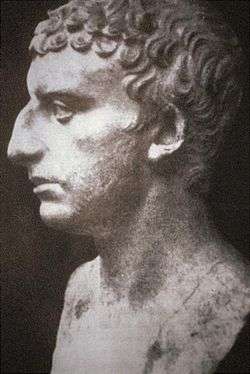
Early nonrabbinic
- Josephus. The Wars of the Jews, 6:3:3–5. Circa 75 CE. Reprinted in, e.g., The Works of Josephus: Complete and Unabridged, New Updated Edition. Translated by William Whiston, pages 737–38. Peabody, Massachusetts: Hendrickson Publishers, 1987. ISBN 0-913573-86-8.
Classical rabbinic
- Mishnah: Challah 4:9; Taanit 3:5; Megillah 3:3, 6; Chagigah 1:4; Avot 5:8; Menachot 9:7, 12:1; Bekhorot 1:7, 9:1–8; Arakhin 1:1–9:8; Temurah 1:1–7:6. Land of Israel, circa 200 CE. Reprinted in, e.g., The Mishnah: A New Translation. Translated by Jacob Neusner, pages 157, 312, 320–21, 329, 752, 759, 790, 807–36. New Haven: Yale University Press, 1988. ISBN 0-300-05022-4.
- Sifra 260:1–277:1. Land of Israel, 4th Century CE. Reprinted in, e.g., Sifra: An Analytical Translation. Translated by Jacob Neusner, volume 3, pages 345–409. Atlanta: Scholars Press, 1988. ISBN 1-55540-207-0.
- Jerusalem Talmud: Berakhot 90b; Peah 8a, 64a; Maasrot 1a; Maaser Sheni 4a, 24a, 31b, 37b, 48a, 50a; Challah 15b, 31b, 46b; Shabbat 88b; Rosh Hashanah 4b; Taanit 4b; Megillah 8a, 30a; Yevamot 10b; Nedarim 1a; Nazir 1a, 6b, 16b, 23b. Land of Israel, circa 400 CE. Reprinted in, e.g., Talmud Yerushalmi. Edited by Chaim Malinowitz, Yisroel Simcha Schorr, and Mordechai Marcus, volumes 2–3, 9–11, 15, 24, 25–26, 29, 33–34. Brooklyn: Mesorah Publications, 2006–2016. And reprinted in, e.g., The Jerusalem Talmud: A Translation and Commentary. Edited by Jacob Neusner and translated by Jacob Neusner, Tzvee Zahavy, B. Barry Levy, and Edward Goldman. Peabody, Massachusetts: Hendrickson Publishers, 2009. ISBN 978-1-59856-528-7.
- Genesis Rabbah 1:15; 4:5; 6:5; 12:2, 6; 13:15; 56:9; 66:2. Land of Israel, 5th century. Reprinted in, e.g., Midrash Rabbah: Genesis. Translated by Harry Freedman and Maurice Simon, volume 1, pages 13–14, 30, 44, 88–89, 91–93, 108–09, 498–99; volume 2, 601. London: Soncino Press, 1939. ISBN 0-900689-38-2.
- Leviticus Rabbah 6:5, 10:7, 11:3, 15:1, 34:9, 35:1–37:4. Land of Israel, 5th Century. Reprinted in, e.g., Midrash Rabbah: Leviticus. Translated by Harry Freedman and Maurice Simon, volume 4, pages 84, 131, 137, 189, 435, 446–71. London: Soncino Press, 1939. ISBN 0-900689-38-2.
.jpg)
- Babylonian Talmud: Berakhot 47b; Shabbat 32b–33a, 77b, 104a, 136b, 148b; Eruvin 2a, 31b, 50a; Pesachim 37b, 63a, 66b; Yoma 50b, 66a, 80a; Beitzah 36b; Rosh Hashanah 2a, 4a; Taanit 7b, 22b; Megillah 2b, 11a, 23b, 25b, 28a, 31a–b; Chagigah 10a; Yevamot 20a, 84a; Ketubot 37b, 46a, 54a; Nedarim 18b, 20a, 36b, 69b; Nazir 25a, 31a–b, 61a, 62a; Gittin 12a, 37a, 38b, 48a; Kiddushin 5a, 7a, 17a, 24a, 29a, 32a, 53a, 54b, 61a–b; Bava Kamma 10a, 13a, 40a, 68b, 69b, 73b, 78a, 102b, 109b, 110b, 115b; Bava Metzia 6a, 7a, 46a, 47a, 53b–55a, 57a, 67b, 91a, 106a, 113b; Bava Batra 71a, 72a–b, 75a, 88b, 91b, 103a, 108b, 112a, 121b; Sanhedrin 14b–15a, 27b, 52b, 63b, 70a, 87a, 88a, 100a; Makkot 13a–b, 16a, 19a, 21b, 22b, 24a; Shevuot 11b, 16b, 21a, 22a, 39a; Avodah Zarah 5a, 13a, 63a; Zevachim 5b–6a, 9a, 12a, 30a, 56b, 81b; Menachot 6a, 79b, 81a, 82a, 87b, 92a, 93a, 101a; Chullin 2a, 25b, 30a, 41b, 69a–b, 84a, 114a, 130a, 133b, 135a, 136b, 139a; Bekhorot 4b, 10b–11a, 12a, 13a, 14a–b, 15b, 31b–32b, 36b, 37b, 41b–42a, 49a, 50a–b, 51b, 53a–b, 54b, 57a, 58b, 59b–60b; Arakhin 2a–34a; Temurah 2a–34a; Keritot 27a; Meilah 10b, 13a; Niddah 4b; 28b; 48a. Babylonia, 6th Century. Reprinted in, e.g., Talmud Bavli. Edited by Yisroel Simcha Schorr, Chaim Malinowitz, and Mordechai Marcus, 72 volumes. Brooklyn: Mesorah Pubs., 2006.
- Tanhuma Bechukotai. 6th–7th Century. Reprinted in, e.g., Metsudah Midrash Tanchuma: Vayikra. Translated and annotated by Avraham Davis, edited by Yaakov Y.H. Pupko, volume 5, pages 531–58. Monsey, New York: Eastern Book Press, 2006.
Medieval
- Tanna Devei Eliyahu. Seder Eliyyahu Rabbah 16, 56, 95–96, 130–31. Eliyyahu Zuta 171. 10th Century. Reprinted in, e.g., Tanna Debe Eliyyahu: The Lore of the School of Elijah. Translated by William G. Braude and Israel J. Kapstein, pages 34, 129, 212, 283, 365. Philadelphia: Jewish Publication Society, 1981. ISBN 0-8276-0634-6.
- Solomon ibn Gabirol. A Crown for the King, 24:284. Spain, 11th Century. Translated by David R. Slavitt, pages 38–39. New York: Oxford University Press, 1998. ISBN 0-19-511962-2.
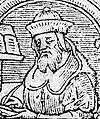
- Rashi. Commentary. Leviticus 26–27. Troyes, France, late 11th Century. Reprinted in, e.g., Rashi. The Torah: With Rashi's Commentary Translated, Annotated, and Elucidated. Translated and annotated by Yisrael Isser Zvi Herczeg, volume 3, pages 347–86. Brooklyn: Mesorah Publications, 1994. ISBN 0-89906-028-5.
- Rashbam. Commentary on the Torah. Troyes, early 12th century. Reprinted in, e.g., Rashbam's Commentary on Leviticus and Numbers: An Annotated Translation. Edited and translated by Martin I. Lockshin, pages 139–54. Providence: Brown Judaic Studies, 2001. ISBN 1-930675-07-0.
- Abraham ibn Ezra. Commentary on the Torah. Mid-12th century. Reprinted in, e.g., Ibn Ezra's Commentary on the Pentateuch: Leviticus (Va-yikra). Translated and annotated by H. Norman Strickman and Arthur M. Silver, volume 3, pages 261–87. New York: Menorah Publishing Company, 2004. ISBN 0-932232-11-6.
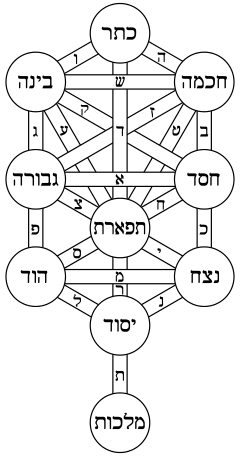
- Maimonides. The Guide for the Perplexed, part 1, chapter 30; part 3, chapters 17, 32, 35, 36, 37, 41, 46, 51. Cairo, Egypt, 1190. Reprinted in, e.g., Moses Maimonides. The Guide for the Perplexed. Translated by Michael Friedländer, pages 39, 287, 326, 329, 331–32, 334, 346, 360–61, 388. New York: Dover Publications, 1956. ISBN 0-486-20351-4.
- Bahir, part 1, paragraphs 67, 103. Provence, circa 1174. Reprinted in, e.g., The Bahir: A Translation and Commentary. Translation and commentary by Aryeh Kaplan, pages 24, 38. Lanham, Maryland: Jason Aronson, 1977. ISBN 1-56821-383-2.
- Hezekiah ben Manoah. Hizkuni. France, circa 1240. Reprinted in, e.g., Chizkiyahu ben Manoach. Chizkuni: Torah Commentary. Translated and annotated by Eliyahu Munk, volume 3, pages 830–46. Jerusalem: Ktav Publishers, 2013. ISBN 978-1-60280-261-2.
- Nachmanides. Commentary on the Torah. Jerusalem, circa 1270. Reprinted in, e.g., Ramban (Nachmanides): Commentary on the Torah. Translated by Charles B. Chavel, volume 3, pages 455–83. New York: Shilo Publishing House, 1974. ISBN 0-88328-007-8.
- Zohar 3:112a–115b. Spain, late 13th Century. Reprinted in, e.g., The Zohar. Translated by Harry Sperling and Maurice Simon. 5 volumes. London: Soncino Press, 1934.
- Bahya ben Asher. Commentary on the Torah. Spain, early 14th century. Reprinted in, e.g., Midrash Rabbeinu Bachya: Torah Commentary by Rabbi Bachya ben Asher. Translated and annotated by Eliyahu Munk, volume 5, pages 1845–77. Jerusalem: Lambda Publishers, 2003. ISBN 965-7108-45-4.
- Jacob ben Asher (Baal Ha-Turim). Rimze Ba'al ha-Turim. Early 14th century. Reprinted in, e.g., Baal Haturim Chumash: Vayikra/Leviticus. Translated by Eliyahu Touger; edited, elucidated, and annotated by Avie Gold, volume 3, pages 1295–318. Brooklyn: Mesorah Publications, 2000. ISBN 1-57819-130-0.
- Jacob ben Asher. Perush Al ha-Torah. Early 14th century. Reprinted in, e.g., Yaakov ben Asher. Tur on the Torah. Translated and annotated by Eliyahu Munk, volume 3, pages 986–1003. Jerusalem: Lambda Publishers, 2005. ISBN 978-9657108765.
- Isaac ben Moses Arama. Akedat Yizhak (The Binding of Isaac). Late 15th century. Reprinted in, e.g., Yitzchak Arama. Akeydat Yitzchak: Commentary of Rabbi Yitzchak Arama on the Torah. Translated and condensed by Eliyahu Munk, volume 2, pages 673–83. New York, Lambda Publishers, 2001. ISBN 965-7108-30-6.
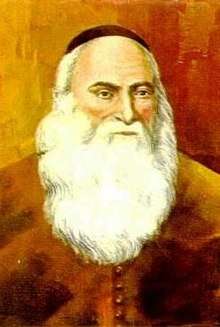
Modern
- Isaac Abravanel. Commentary on the Torah. Italy, between 1492–1509. Reprinted in, e.g., Abarbanel: Selected Commentaries on the Torah: Volume 3: Vayikra/Leviticus. Translated and annotated by Israel Lazar, pages 253–301. Brooklyn: CreateSpace, 2015. ISBN 978-1508721338.
- Obadiah ben Jacob Sforno. Commentary on the Torah. Venice, 1567. Reprinted in, e.g., Sforno: Commentary on the Torah. Translation and explanatory notes by Raphael Pelcovitz, pages 626–37. Brooklyn: Mesorah Publications, 1997. ISBN 0-89906-268-7.
- Moshe Alshich. Commentary on the Torah. Safed, circa 1593. Reprinted in, e.g., Moshe Alshich. Midrash of Rabbi Moshe Alshich on the Torah. Translated and annotated by Eliyahu Munk, volume 2, pages 772–90. New York, Lambda Publishers, 2000. ISBN 965-7108-13-6.
- Avraham Yehoshua Heschel. Commentaries on the Torah. Cracow, Poland, mid 17th century. Compiled as Chanukat HaTorah. Edited by Chanoch Henoch Erzohn. Piotrkow, Poland, 1900. Reprinted in Avraham Yehoshua Heschel. Chanukas HaTorah: Mystical Insights of Rav Avraham Yehoshua Heschel on Chumash. Translated by Avraham Peretz Friedman, pages 238–40. Southfield, Michigan: Targum Press/Feldheim Publishers, 2004. ISBN 1-56871-303-7.
.jpg)
- Thomas Hobbes. Leviathan, 3:40. England, 1651. Reprint edited by C. B. Macpherson, pages 503–04. Harmondsworth, England: Penguin Classics, 1982. ISBN 0-14-043195-0.
- Shabbethai Bass. Sifsei Chachamim. Amsterdam, 1680. Reprinted in, e.g., Sefer Vayikro: From the Five Books of the Torah: Chumash: Targum Okelos: Rashi: Sifsei Chachamim: Yalkut: Haftaros, translated by Avrohom Y. Davis, pages 530–87. Lakewood Township, New Jersey: Metsudah Publications, 2012.
- Chaim ibn Attar. Ohr ha-Chaim. Venice, 1742. Reprinted in Chayim ben Attar. Or Hachayim: Commentary on the Torah. Translated by Eliyahu Munk, volume 3, pages 1291–346. Brooklyn: Lambda Publishers, 1999. ISBN 965-7108-12-8.
- Nachman of Breslov. Teachings. Bratslav, Ukraine, before 1811. Reprinted in Rebbe Nachman's Torah: Breslov Insights into the Weekly Torah Reading: Exodus-Leviticus. Compiled by Chaim Kramer; edited by Y. Hall, pages 426–37. Jerusalem: Breslov Research Institute, 2011. ISBN 978-1-928822-53-0.
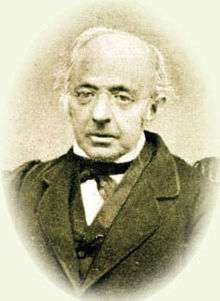
- Samuel David Luzzatto (Shadal). Commentary on the Torah. Padua, 1871. Reprinted in, e.g., Samuel David Luzzatto. Torah Commentary. Translated and annotated by Eliyahu Munk, volume 3, pages 993–1003. New York: Lambda Publishers, 2012. ISBN 978-965-524-067-2.
- Yehudah Aryeh Leib Alter. Sefat Emet. Góra Kalwaria (Ger), Poland, before 1906. Excerpted in The Language of Truth: The Torah Commentary of Sefat Emet. Translated and interpreted by Arthur Green, pages 209–15. Philadelphia: Jewish Publication Society, 1998. ISBN 0-8276-0650-8. Reprinted 2012. ISBN 0-8276-0946-9.
- Alexander Alan Steinbach. Sabbath Queen: Fifty-four Bible Talks to the Young Based on Each Portion of the Pentateuch, pages 103–06. New York: Behrman's Jewish Book House, 1936.
- Isaac Mendelsohn. Slavery in the Ancient Near East, pages 117ff. New York: Oxford University Press, 1949. (The 50 shekels of Leviticus 27:3 was a reasonable price for an adult male slave.)
- Gordon J. Wenham. "Leviticus 27:2–8 and the Price of Slaves." Zeitschrift für die Alttestamentliche Wissenschaft, volume 90 (1978): pages 264–65.
- Gordon J. Wenham. The Book of Leviticus, pages 324–43. Grand Rapids, Michigan: William B. Eerdmans Publishing Company, 1979. ISBN 0-8028-2522-2.
- Lionel E. Moses. "Is There an Authentic Triennial Cycle of Torah Readings?" New York: Rabbinical Assembly, 1987. OH 137.1987b. Reprinted in Responsa: 1980–1990: The Committee on Jewish Law and Standards of the Conservative Movement. Edited by David J. Fine, pages 77, 90. New York: Rabbinical Assembly, 2005. ISBN 0-916219-27-5. (implications of an injunction to read the curses before the end of Passover for a triennial Torah reading cycle).
- Avram Israel Reisner. "A Halakhic Ethic of Care for the Terminally Ill." New York: Rabbinical Assembly, 1990. YD 339:1.1990a. Reprinted in Responsa: 1980–1990: The Committee on Jewish Law and Standards of the Conservative Movement. Edited by David J. Fine, pages 467, 477, 497 n. 32. New York: Rabbinical Assembly, 2005. ISBN 0-916219-27-5. (God's role in illness and healing, and the implications for our duty to seek medical care).
- Pinchas H. Peli. Torah Today: A Renewed Encounter with Scripture, pages 151–54. Washington, D.C.: B'nai B'rith Books, 1987. ISBN 0-910250-12-X.
- Mark S. Smith. The Early History of God: Yahweh and the Other Deities in Ancient Israel, page 100. New York: HarperSanFrancisco, 1990. ISBN 0-06-067416-4.
- Harvey J. Fields. A Torah Commentary for Our Times: Volume II: Exodus and Leviticus, pages 150–61. New York: UAHC Press, 1991. ISBN 0-8074-0334-2.
- Walter C. Kaiser Jr., "The Book of Leviticus," in The New Interpreter's Bible, volume 1, pages 1175–91. Nashville: Abingdon Press, 1994. ISBN 0-687-27814-7.
- Judith S. Antonelli. "Mother Nature." In In the Image of God: A Feminist Commentary on the Torah, pages 322–28. Northvale, New Jersey: Jason Aronson, 1995. ISBN 1-56821-438-3.
- Ellen Frankel. The Five Books of Miriam: A Woman's Commentary on the Torah, pages 191–93. New York: G. P. Putnam's Sons, 1996. ISBN 0-399-14195-2.

- W. Gunther Plaut. The Haftarah Commentary, pages 318–26. New York: UAHC Press, 1996. ISBN 0-8074-0551-5.
- Sorel Goldberg Loeb and Barbara Binder Kadden. Teaching Torah: A Treasury of Insights and Activities, pages 220–25. Denver: A.R.E. Publishing, 1997. ISBN 0-86705-041-1.
- Elliot N. Dorff and Aaron L. Mackler. "Responsibilities for the Provision of Health Care." New York: Rabbinical Assembly, 1998. YD 336:1.1998. Reprinted in Responsa: 1991–2000: The Committee on Jewish Law and Standards of the Conservative Movement. Edited by Kassel Abelson and David J. Fine, pages 319, 321 note 2. New York: Rabbinical Assembly, 2002. ISBN 0-916219-19-4. (God's role in illness and healing, and the implications for our duty to provide medical care).
- Elizabeth Bolton. "Mir Zaynen Do — We Are Here." In The Women's Torah Commentary: New Insights from Women Rabbis on the 54 Weekly Torah Portions. Edited by Elyse Goldstein, pages 246–52. Woodstock, Vermont: Jewish Lights Publishing, 2000. ISBN 1-58023-076-8.
- Frank H. Gorman Jr. “Leviticus.” In The HarperCollins Bible Commentary. Edited by James L. Mays, pages 164–65. New York: HarperCollins Publishers, revised edition, 2000. ISBN 0-06-065548-8.
- Lainie Blum Cogan and Judy Weiss. Teaching Haftarah: Background, Insights, and Strategies, pages 396–401. Denver: A.R.E. Publishing, 2002. ISBN 0-86705-054-3.
- Michael Fishbane. The JPS Bible Commentary: Haftarot, pages 203–09. Philadelphia: Jewish Publication Society, 2002. ISBN 0-8276-0691-5.
- Robert Alter. The Five Books of Moses: A Translation with Commentary, pages 660–72. New York: W.W. Norton & Co., 2004. ISBN 0-393-01955-1.
- Jacob Milgrom. Leviticus: A Book of Ritual and Ethics: A Continental Commentary, pages 317–33. Minneapolis: Fortress Press, 2004. ISBN 0-8006-9514-3.
- Baruch J. Schwartz. "Leviticus." In The Jewish Study Bible. Edited by Adele Berlin and Marc Zvi Brettler, pages 273–80. New York: Oxford University Press, 2004. ISBN 0-19-529751-2.
- Hanna Gracia Yerushalmi. "Haftarat Bechukotai: Jeremiah 16:19–17:14." In The Women's Haftarah Commentary: New Insights from Women Rabbis on the 54 Weekly Haftarah Portions, the 5 Megillot & Special Shabbatot. Edited by Elyse Goldstein, pages 151–58. Woodstock, Vermont: Jewish Lights Publishing, 2004. ISBN 1-58023-133-0.
- Antony Cothey. “Ethics and Holiness in the Theology of Leviticus.” Journal for the Study of the Old Testament, volume 30 (number 2) (December 2005): pages 131–51.
- Professors on the Parashah: Studies on the Weekly Torah Reading Edited by Leib Moscovitz, pages 225–30. Jerusalem: Urim Publications, 2005. ISBN 965-7108-74-8.
- Calum Carmichael. Illuminating Leviticus: A Study of Its Laws and Institutions in the Light of Biblical Narratives. Baltimore: Johns Hopkins University Press, 2006. ISBN 0-8018-8500-0.
- Bernard J. Bamberger. “Leviticus.” In The Torah: A Modern Commentary: Revised Edition. Edited by W. Gunther Plaut; revised edition edited by David E.S. Stern, The Torah: A Modern Commentary: Revised Edition. Revised edition edited by David E.S. Stern, pages 864–82. New York: Union for Reform Judaism, 2006. ISBN 0-8074-0883-2.
- Esther Jungreis. Life Is a Test, page 224. Brooklyn: Shaar Press, 2007. ISBN 1-4226-0609-0.

- James L. Kugel. How To Read the Bible: A Guide to Scripture, Then and Now, pages 291, 302, 346–49, 609–10. New York: Free Press, 2007. ISBN 0-7432-3586-X.
- Christophe Nihan. From Priestly Torah to Pentateuch: A Study in the Composition of the Book of Leviticus. Coronet Books, 2007. ISBN 3161492579.
- The Torah: A Women's Commentary. Edited by Tamara Cohn Eskenazi and Andrea L. Weiss, pages 765–86. New York: URJ Press, 2008. ISBN 0-8074-1081-0.
- Roy E. Gane. "Leviticus." In Zondervan Illustrated Bible Backgrounds Commentary. Edited by John H. Walton, volume 1, pages 323–26. Grand Rapids, Michigan: Zondervan, 2009. ISBN 978-0-310-25573-4.
- Reuven Hammer. Entering Torah: Prefaces to the Weekly Torah Portion, pages 189–92. New York: Gefen Publishing House, 2009. ISBN 978-965-229-434-0.
- Sarah Pessin. “‘Less Is More’ and the Gift of Rain: The Value of Devaluation in Behukotai and Cixous’s Desire-That-Gives: Parashat Behukotai (Leviticus 26:3–27:34).” In Torah Queeries: Weekly Commentaries on the Hebrew Bible. Edited by Gregg Drinkwater, Joshua Lesser, and David Shneer; foreword by Judith Plaskow, pages 179–83. New York: New York University Press, 2009. ISBN 0-8147-2012-9.
- Stuart Lasine. “Everything Belongs to Me: Holiness, Danger, and Divine Kingship in the Post-Genesis World.” Journal for the Study of the Old Testament, volume 35 (number 1) (September 2010): pages 31–62.
- Jeffrey Stackert. “Leviticus.” In The New Oxford Annotated Bible: New Revised Standard Version with the Apocrypha: An Ecumenical Study Bible. Edited by Michael D. Coogan, Marc Z. Brettler, Carol A. Newsom, and Pheme Perkins, pages 180–83. New York: Oxford University Press, Revised 4th Edition 2010. ISBN 0-19-528955-2.

- William G. Dever. The Lives of Ordinary People in Ancient Israel: When Archaeology and the Bible Intersect, pages 188, 244, 291. Grand Rapids, Michigan: William B. Eerdmans Publishing Company, 2012. ISBN 978-0-8028-6701-8.
- Shmuel Herzfeld. "If You Want To Sleep at Night, Give Away Your Pillow." In Fifty-Four Pick Up: Fifteen-Minute Inspirational Torah Lessons, pages 184–89. Jerusalem: Gefen Publishing House, 2012. ISBN 978-965-229-558-3.

- Jonathan Sacks. Covenant & Conversation: A Weekly Reading of the Jewish Bible: Leviticus: The Book of Holiness, pages 401–33. Jerusalem: Maggid Books, 2015. ISBN 978-1-59264-022-5.
- Jonathan Sacks. Lessons in Leadership: A Weekly Reading of the Jewish Bible, pages 175–80. New Milford, Connecticut: Maggid Books, 2015. ISBN 978-1-59264-432-2.
- Jonathan Sacks. Essays on Ethics: A Weekly Reading of the Jewish Bible, pages 207–11. New Milford, Connecticut: Maggid Books, 2016. ISBN 978-1-59264-449-0.
- Shai Held. The Heart of Torah, Volume 2: Essays on the Weekly Torah Portion: Leviticus, Numbers, and Deuteronomy, pages 81–89. Philadelphia: Jewish Publication Society, 2017. ISBN 978-0827612716.
- Steven Levy and Sarah Levy. The JPS Rashi Discussion Torah Commentary, pages 106–09. Philadelphia: Jewish Publication Society, 2017. ISBN 978-0827612693.
External links
